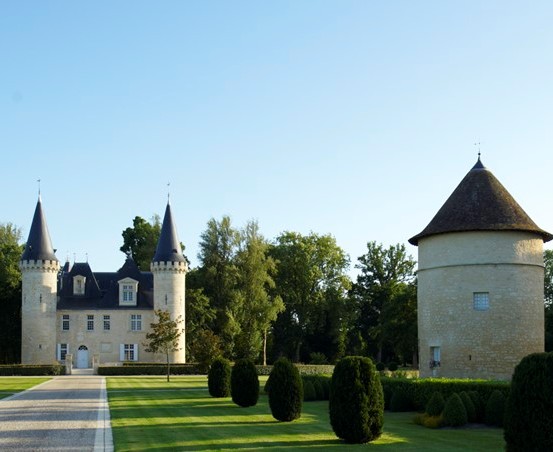 (c) Château d'Agassac
(c) Château d'Agassac
Available in all wine cellars in the region and in supermarkets. Enjoy a tasting at CIVB wine bar in Bordeaux
The Médoc is a large stretch of land, 85 km in length and 30 km wide located north of Bordeaux between the Atlantic Ocean to the west and the river to the east. It has a temperate climate, mild in winter, and warm but not scorching, in summer with the Atlantic Ocean and the Gironde estuary moderating its temperatures.
Vines for several grape varieties are planted, grown and processed separately. It is only in the spring following the harvest and processing that the various wines, all coming from the same terroir, are brought together to be blended to give them all their classic charm and unique Médoc wine character. Most Médoc wines enjoy a fairly long maturing process, aged in oak barrels depending on the vintage.
’
Médoc is divided into two large A.O.Cs which share the area. These are Médoc A.O.C in the north and the Haut-Médoc A.O.C which makes up the southern part of this region where the communal appellations meet: Margaux, Saint Estephe, Pauillac, St. Julien, Moulis en Médoc and Listrac-Médoc.
Well protected from ocean winds at the edge of the Gironde estuary; the Margaux A.O.C covers a vast plateau, 6 km in length and 2 km wide, surrounded by various gravelly ridges.
Margaux wines are recognised for their exceptional finesse and classic elegance. Rich but not heady or insistent, silky but not soft, they offer an exceptional and infinite array of sweet extremely ripe fruit aromas on the palate with melting tannins. This elegant nectar and subtle body make them come across as the most feminine of Médoc wines.
Saint-Estèphe is undoubtedly one of the most notably traditional Médoc wines. And this is true, despite the size of this A.O.C and diverse nature of its soils and subsoils.
Robust wines with not to mention a certain finesse, their well ample tannin structure blends beautifully with rich aromas developing ripe red berry fruits and spicy notes.
South of Saint-Estèphe, the Pauillac A.O.C was classified as having the largest number of Crus Classés in 1855. The Pauillac A.O.C terroir is made up of poor soils unsuitable for any other cultivation which is paradoxically the basis of the these quintessential wines’ opulence.
Rich and complex, Pauillac wine is particularly suitable for ageing. This full-bodied, sappy, refined and distinguished wine with a robust blended body reveals wonderfully structured tannins.
Located between Margaux and Pauillac, the Saint-Julien A.O.C is one of the smallest appellations in the Médoc region, with only 910 hectares of grapevines. Like its neighbour, Pauillac to the north, the Saint-Julien domain is located on soils notable for their high proportion of gravel. The Saint-Julien A.O.C is marked by a great uniformity of quality fine wines and includes no less than 11 Cru Classé making up 80% of the A.O.C.
Powerful and refined, Saint-Julien wines are distinctive for their excellent ageing potential.
The Moulis-en-Médoc A.O.C is located on a narrow inland strip, 7 km west of the Margaux A.O.C. The name of the appellation originates from the large number of mills that once dotted this landscape. Set along the Jalles, the small streams that wind their way through the area in search of the estuary and offer excellent water management for wine-growing subsoils. The A.O.C is situated on rich clay-limestone soils made up of Garonne and Pyrenean gravel. A fair distance from the Landes forest and the estuary, the appellation is resistant to rot, being protected from the fogs which cling to the estuary, enabling late harvests to take place which are synonymous with a maximum fruit maturity, resulting in excellent wines.
Moulis wines age well and have complex fruity aromas, long-lasting on the palate so they can be fully appreciated.
Listrac-Médoc A.O.C is the smallest Médoc appellation with 600 hectares of vines. Notably known as the ‘Roof of the Médoc’ peaking at 43 metres on a limestone plateau, the soils are distinctive for their Pyrenean and Garonne gravel as well as clay, making the soil more fertile. Like its neighbour, the Moulis-en-Médoc A.O.C it is not resistant to the cold, but is to mould thanks to its ‘continental’ location further from the river to protect against the coastal estuary fogs.
Listrac wines have an exceptional longevity producing robust and structured wines to the delight of wine connoisseurs.